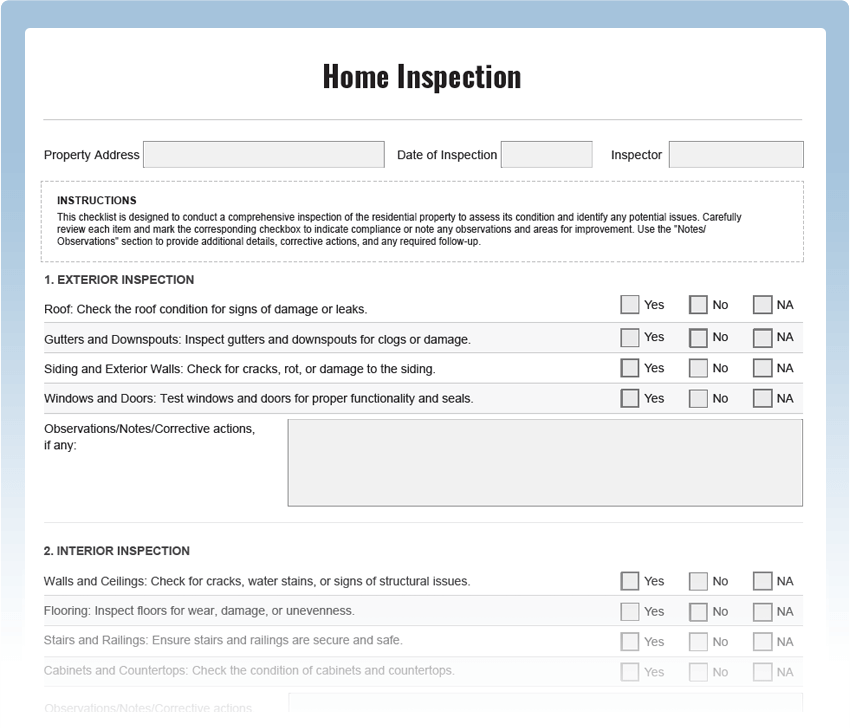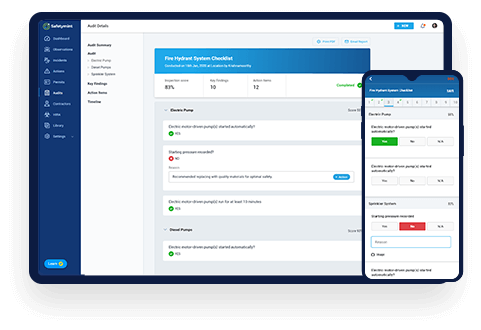Home Inspection Checklist
Ensure the safety, functionality, and peace of mind of your home with our comprehensive Home Inspection Checklist. This free PDF template covers all essential aspects of inspecting a residential property, enabling you to identify potential issues, plan for maintenance, and make informed decisions when buying or selling a home.
Digitize this Checklist on Safetymint
- Create unlimited, customized checklists
- Add Actions, with automated reminders
- Works seamlessly with or without internet
- Access via web browsers, mobile or tablets

What is a Home Inspection Checklist?
A Home Inspection Checklist is a systematic tool used to evaluate the condition and safety of a residential property. It includes a series of checkpoints designed to inspect various areas of the home, from the foundation to the roof. A thorough home inspection provides valuable insights into the property’s overall condition, allowing homeowners and buyers to address any concerns and prioritize maintenance or repairs.
Key Areas to Inspect in a Home:
- Exterior and Roof: Check the exterior walls, roof, gutters, and downspouts for damage, leaks, or signs of wear.
- Foundation and Structure: Inspect the foundation for cracks or settling issues and assess the overall structural integrity.
- Electrical System: Test electrical outlets, switches, and the circuit breaker panel for functionality and safety.
- Plumbing System: Check for leaks, water pressure, and functionality of faucets, toilets, and drains.
- Heating, Ventilation, and Air Conditioning (HVAC): Inspect the HVAC system for proper operation and maintenance.
- Interior Spaces: Assess the condition of walls, ceilings, flooring, and windows.
- Kitchen and Appliances: Verify the functionality of kitchen appliances and inspect cabinets and countertops.
- Bathrooms: Check for leaks, ventilation, and functionality of bathroom fixtures.
Common Home Inspection Findings:
Frequent issues found during home inspections include:
- Roof Damage: Missing or damaged roof shingles, leading to potential leaks.
- Foundation Cracks: Cracks in the foundation indicating settling or structural issues.
- Electrical Hazards: Unsafe electrical wiring or overloaded circuits.
- Plumbing Leaks: Leaking pipes or fixtures causing water damage.
- HVAC Problems: Inefficient or malfunctioning heating and cooling systems.
Home Inspection Best Practices:
- Professional Inspection: Consider hiring a qualified home inspector to conduct a comprehensive inspection.
- Maintenance History: Gather information about the home’s maintenance and repair history.
- Prioritize Safety: Address safety concerns and potential hazards promptly.
- Documentation: Keep detailed records of the inspection findings and any recommended repairs.




